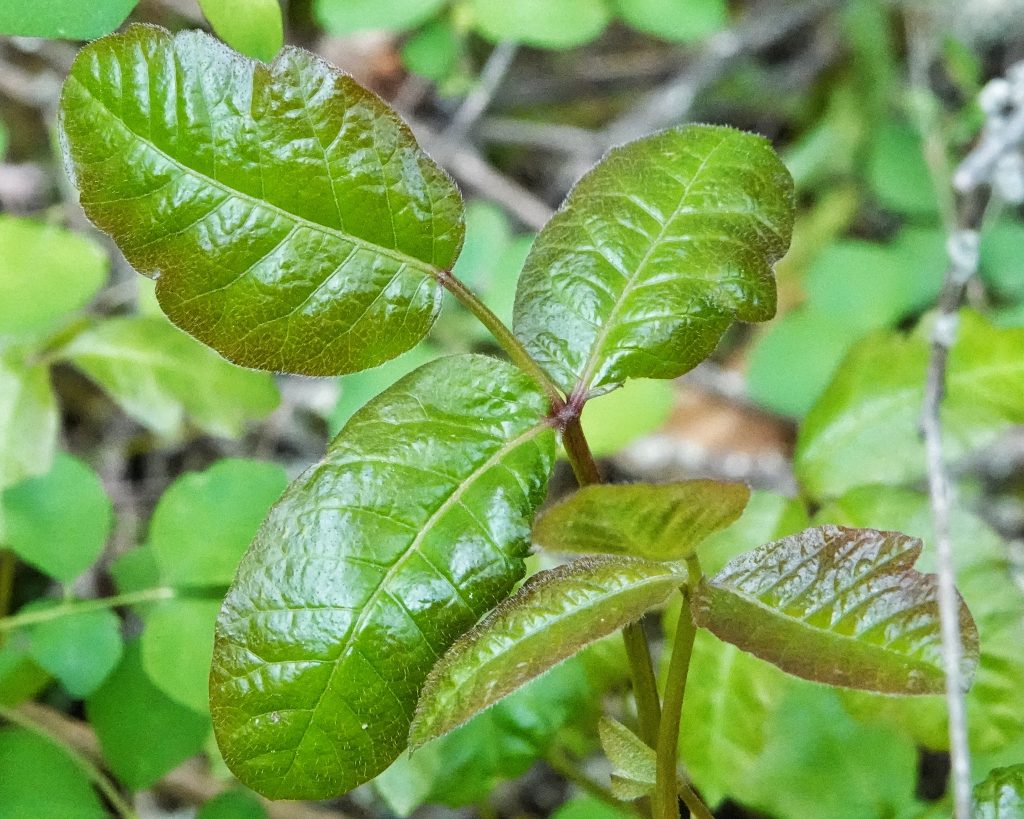
One of my pet peeves is people leaving their dogs unleashed on trails and out in the woods, and I’ve been known to do a bit of barking myself when I see their pets chasing wildlife. So when I am in an area with abundant poison oak and I see folks with unleashed dogs, I am petty enough to consider not warning them about the burning, itching rash they will probably get while petting their dogs and smearing themselves with the Urushiol (the oleoresin produced by the plant that causes the irritation), that has been painted onto their coats by brushing against the plants. But I’m also petty enough to love the idea of having a reason to tell them why they are being foolish, and to do it in tones that do not activate their defensiveness, so that they can stew in an awareness of their ignorance.
For those wondering about my absence, or the changes in the form of these profiles, please see my recent blog ‘Equinoctial evaluations’.
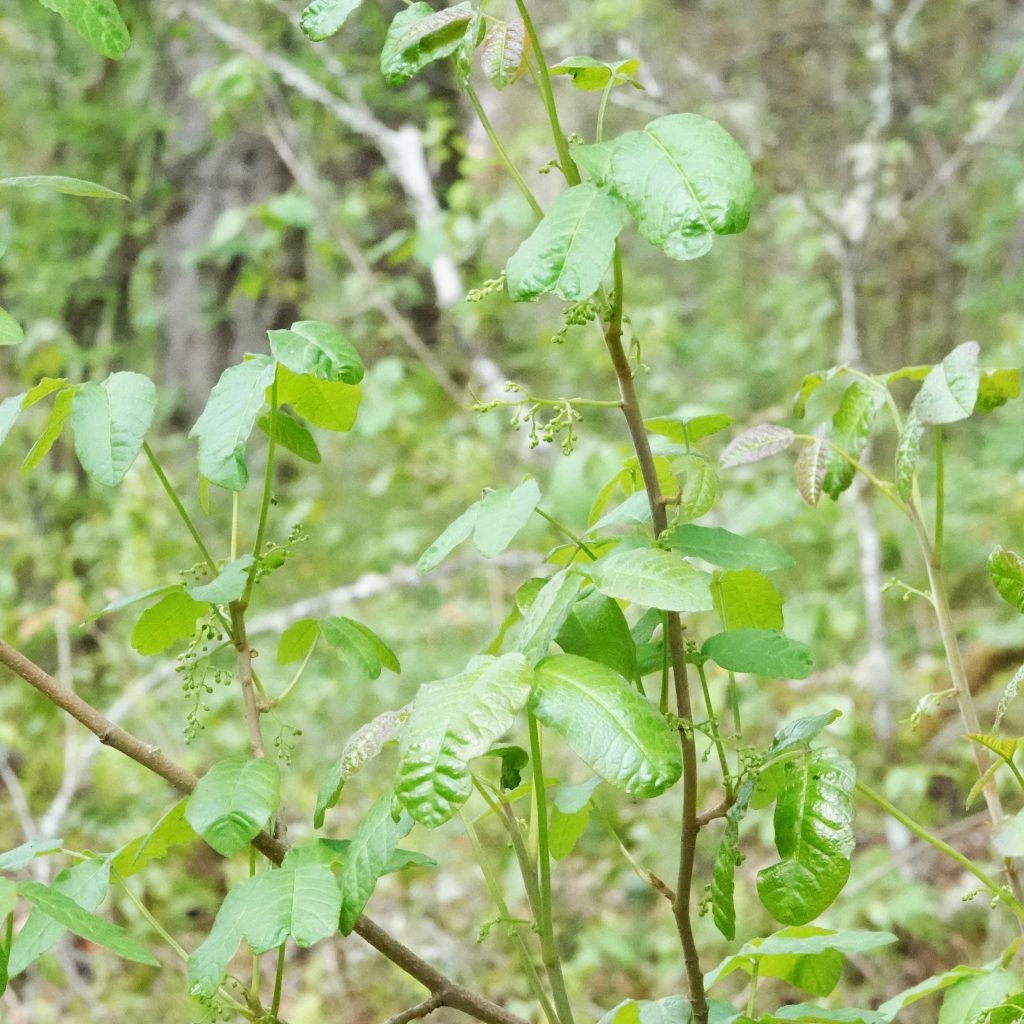
It was heartening to me to discover how many animals consume the various parts of poison oak. I have never hated this plant, because it is native and not invasive (the only plants I actually hate are scotch broom and English ivy), but I’m certainly not a fan, having endured some horrible, carelessness induced episodes of dealing with its toxic exudates. A good friend nearly died from inhaling the smoke of burning piles of it that we had unwittingly cut down to clear a spot for his cabin, since neither of us were botanically savvy enough to recognize the winter bare twigs, and I ended up with a rash that covered my entire body (yes, there too!) But finding out all of the wildlife that utilize Toxicodendron diversilobum gives me much more appreciation for its role in the ecosystems it inhabits. Besides all of the links I’ve posted with quoted material (and I do quote this in the description section), a very informative article by Sonya Daw can be found at Pacific Poison Oak (U.S. National Park Service)
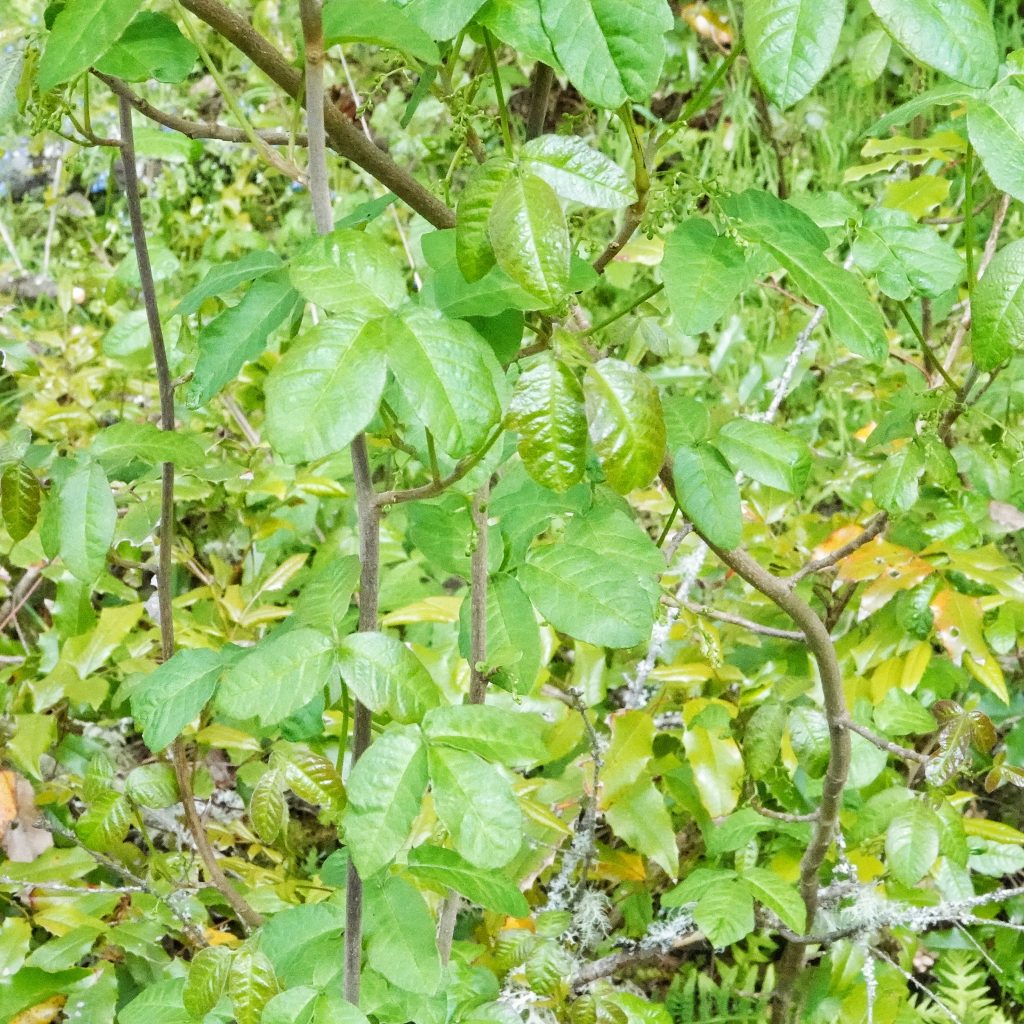
Poison oak is so called because the lobes of the leaves sometimes resemble oak leaves, but it is in the sumac family (Anacardiaceae) and is not related to the oaks. It does seem to have a common association with Garry oaks in our region, and any time I notice oaks I start watching out for Toxicodendron diversilobum. But it can grow in a variety of places with acidic, rocky soils, and I’ve run into it, sometimes literally, whilst rock climbing or fishing in areas with no oaks at all.
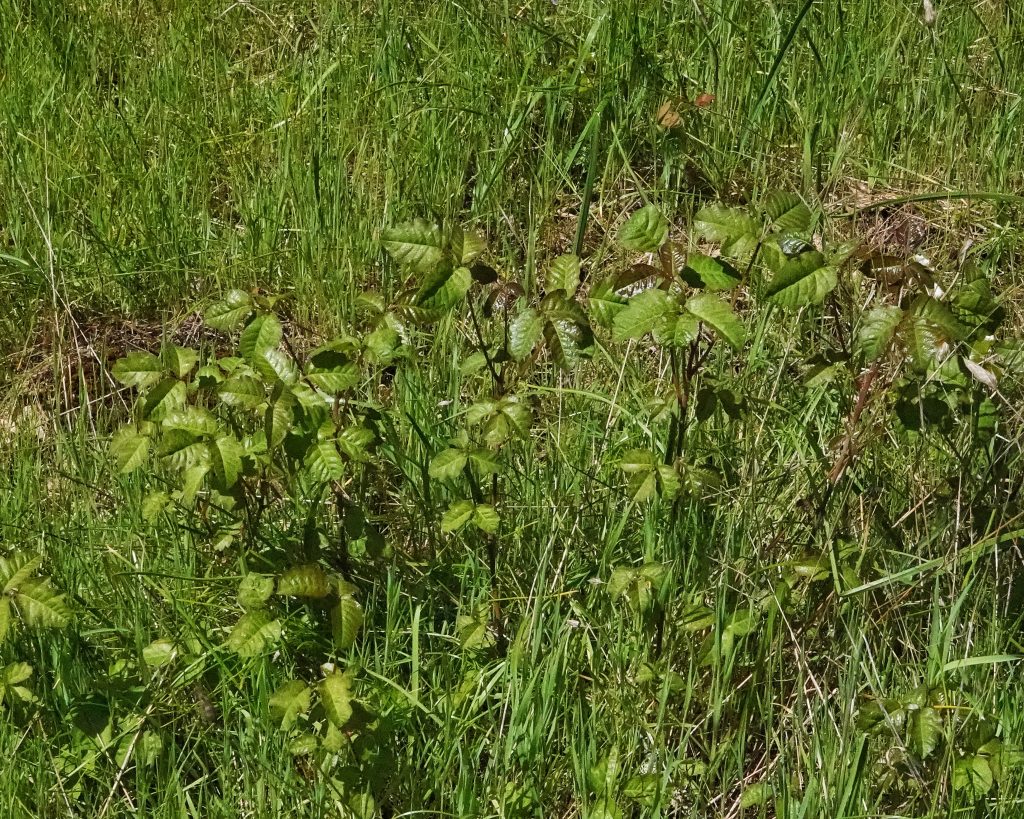
“Before the urushiol has been absorbed by the skin, it can be removed with soap and water. Substantial amounts of urushiol may be absorbed within minutes. Once urushiol has penetrated the skin, attempting to remove it with water is ineffective. After being absorbed by the skin, it is recognized by the immune system‘s dendritic cells, otherwise called Langerhans cells. These cells then migrate to the lymph nodes, where they present the urushiol to T-lymphocytes and thus recruit them to the skin, and the T-lymphocytes cause pathology through the production of cytokines and cytotoxic damage to the skin. This causes the painful rash, blisters, and itching.” wikipedia.Urushiol . It should be noted that simple laundering of clothing contaminated by the urushiol is usually enough to remove it.
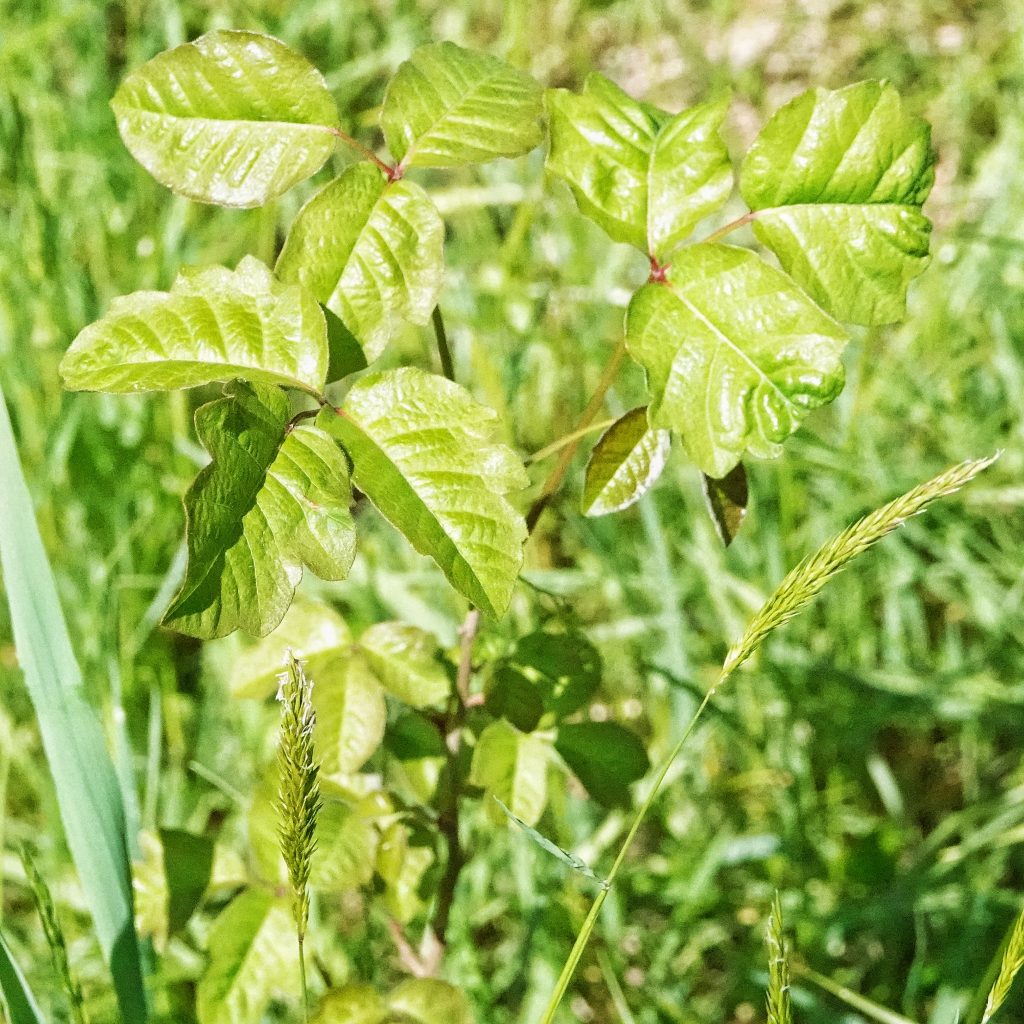
Ethnobotany– “Natives used the stems for basketry. Leaves and roots were used for various medicinal purpose. A black dye was made from the ashes or juice of the plant. The resins of some Asian species are used to make lacquer.” Pacific Poison Oak, Toxicodendron diversilobum | Native Plants PNW . See also the 25 entries on BRIT – Native American Ethnobotany Database . Some people also purposely plant it in gardens, because the fall foliage is an attractive pinkish red.
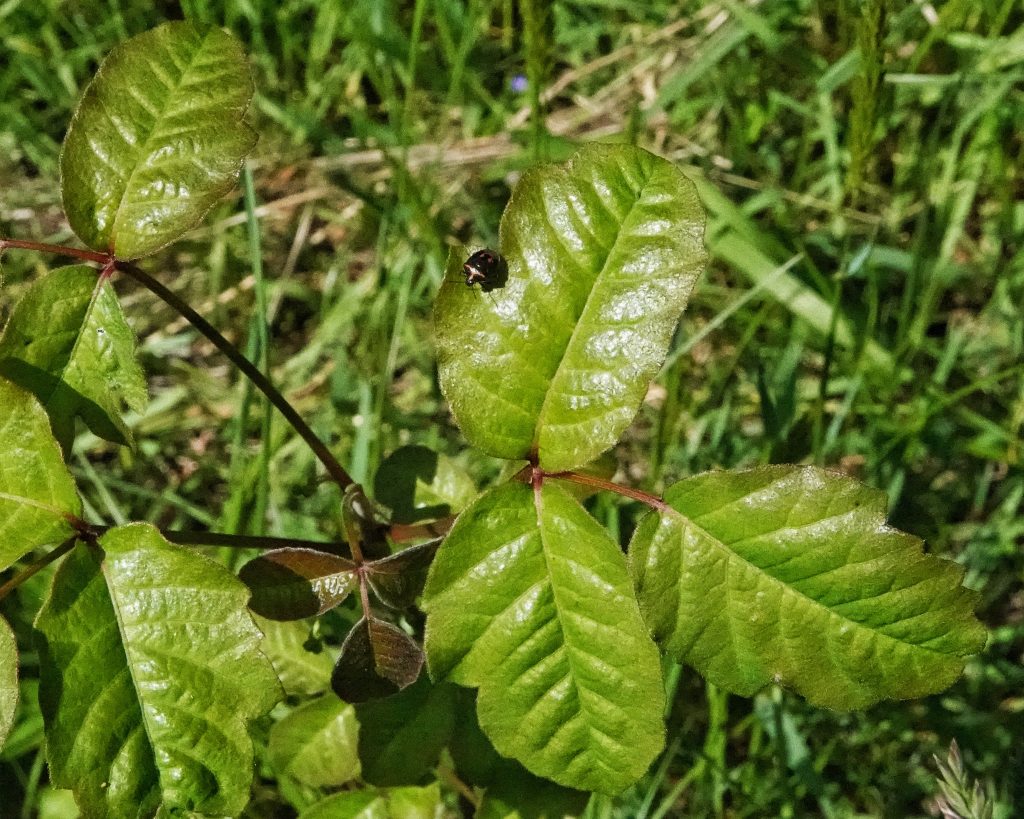
Description– Grows 1-8’ tall. “Vine or shrub, round stems reddish or gray. Leaves divided into 3 oblong shiny leaflets on twigs to 4 in. long. Edges can be smooth, wavy, or lobed. Dark green color becomes bright red in autumn. Oblong clusters of flowers on a separate stalk. Berries cream or brown.” Toxicodendron diversilobum | Poison-oak | Wildflowers of the Pacific Northwest
“Toxicodendron diversilobum, otherwise known as Pacific or western poison oak, is a perennial, deciduous shrub—sometimes growing as a vine—that dons its leafy cloak in February and March. Its stems grow quickly over the next 2 months, innocently dangling over your favorite trail. New leaves are shiny and reddish, maturing into green for the summer and back to yellow or scarlet red before dropping in yellow edthe fall. The leaves are lobed, from 2 to 15 cm (1–6 in) long, and typically arranged as 3-leaflets on stems (“leaves of three – let it be”) that grow alternately from the branch. Some stems, however, have up to 5, 7, or even 9 leaflets.”Pacific Poison Oak (U.S. National Park Service)
“If it has “leaves of 3, let it be!” is a well-known warning referring to Poison-oaks and Poison-ivies. It is a useful identification characteristic, although sometimes there are five leaflets per leaf. Leaflets are irregularly lobed or scalloped, similar to an oak leaf. or sometimes just wavy or nearly entire. Leaves growing in the sun are often thicker and more waxy. Leaves growing in the shade on climbing vines are often thinner and duller. Small greenish-ivory flowers are borne in axillary clusters; with male and female flowers on different plants. Smooth, white fruits are berry-like. Seeds are white or tan and deeply grooved. Stems exude a milky juice when cut.” Pacific Poison Oak, Toxicodendron diversilobum | Native Plants PNW
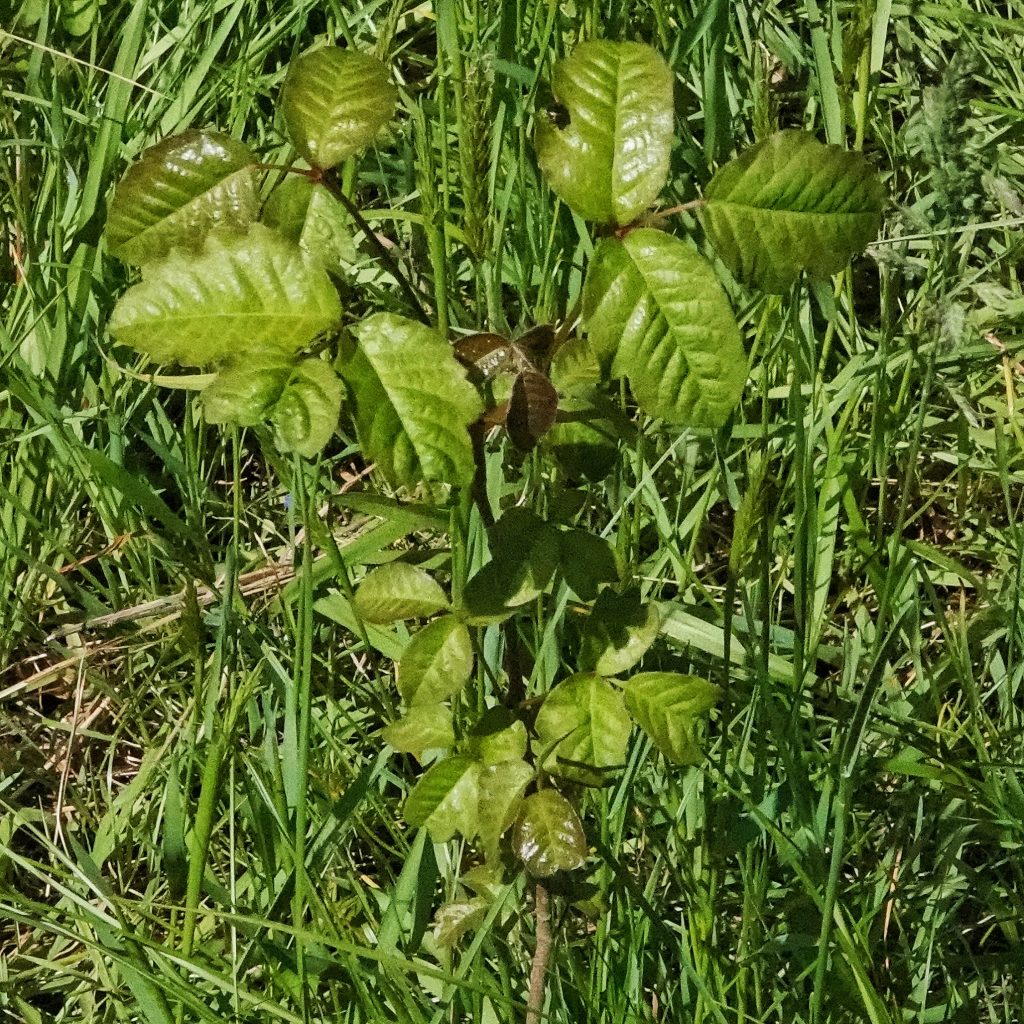
Similar species– Garry oak (Quercus garryana) has more deeply and consistently lobed leaves; Oregon grape (Berberis spp) and English holly (Ilex aquifolium) have spines rather than lobes on the leaf margins; snowberry (Symphoricarpos spp) have much smaller leaves that are never glossy and are never in groups of 3-5; Cape jewelweed (Impatiens capensis) leaves are more toothed than lobed, are never glossy or in groups of 3-5, and the plants are erect; Toxicodendron radicans, which is just as dermatologically unpleasant as T. diversilobum, has generally unlobed leaves that have a pointed, rather than rounded, apex, and is found east of the Cascades- The only area of overlap that I know of is in the Columbia River Gorge.
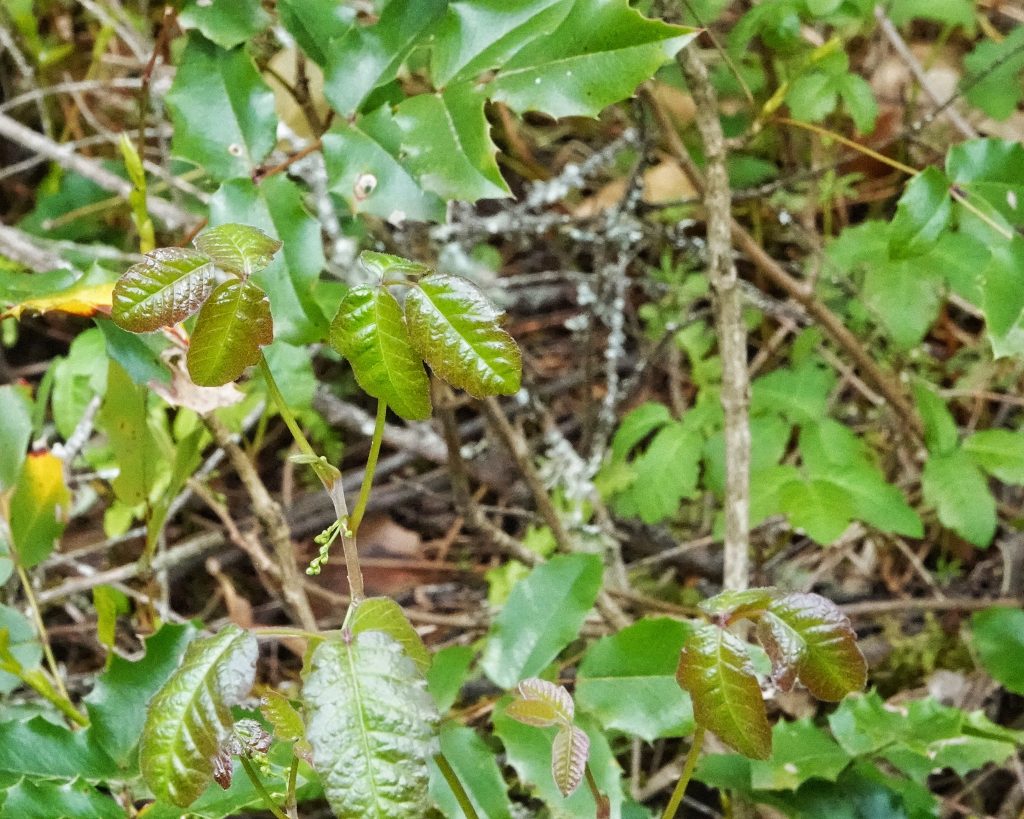
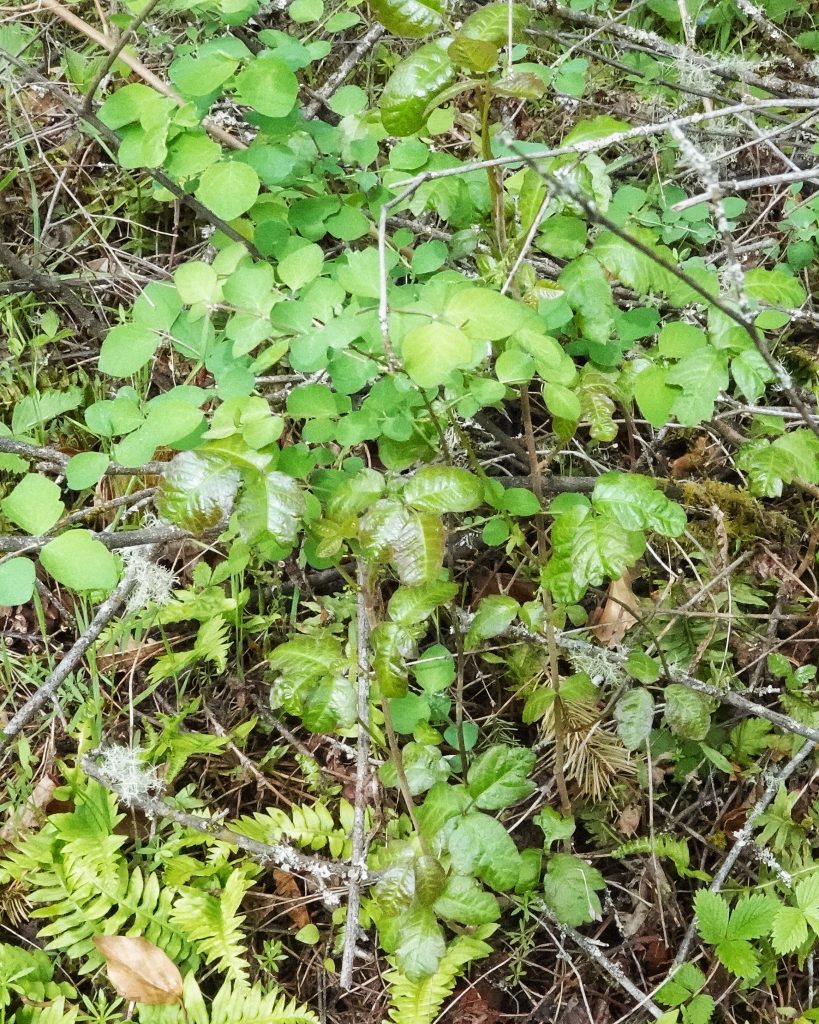
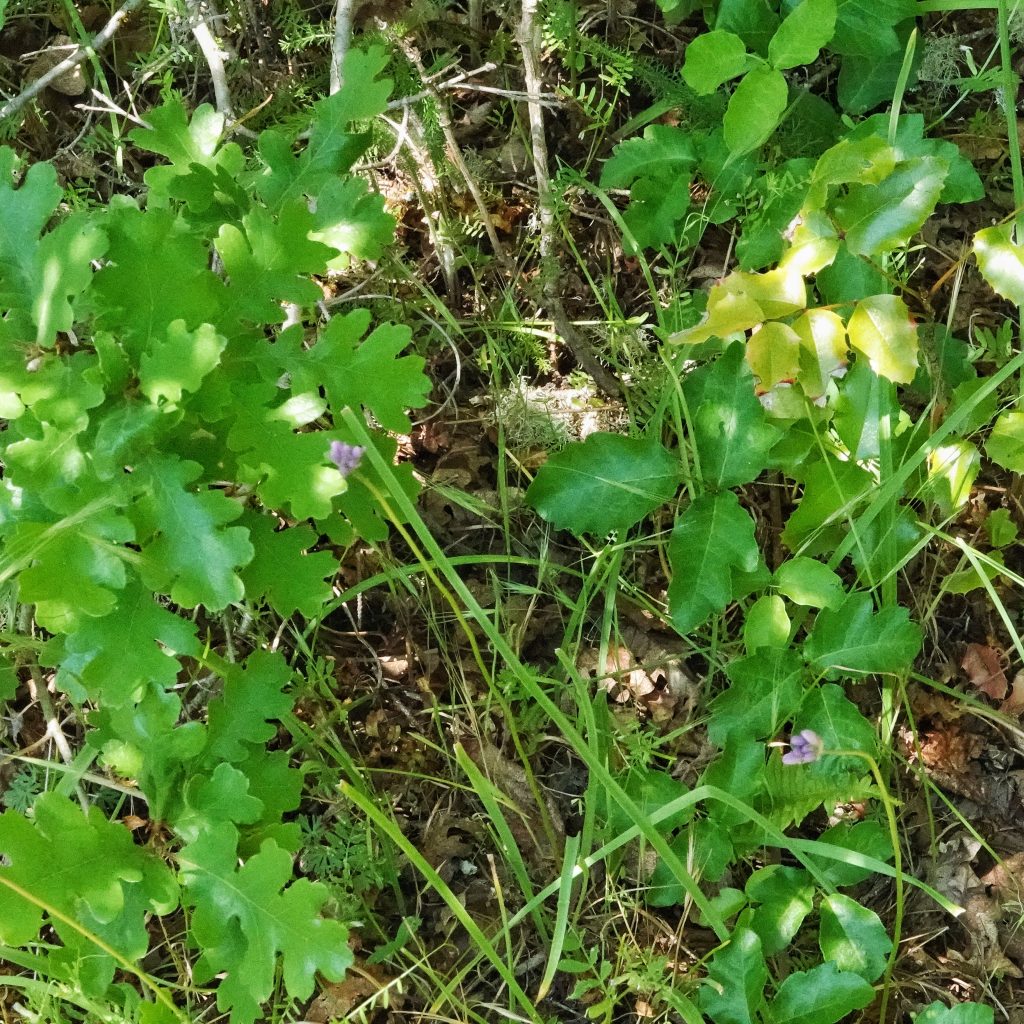
Etymology of names– Toxicodendron is from the Greek words for ‘poison tree.’ The specific epithet diversilobum is from the Latin words for ‘different lobes”, because of its irregularly lobed leaflets that resemble oak leaves.
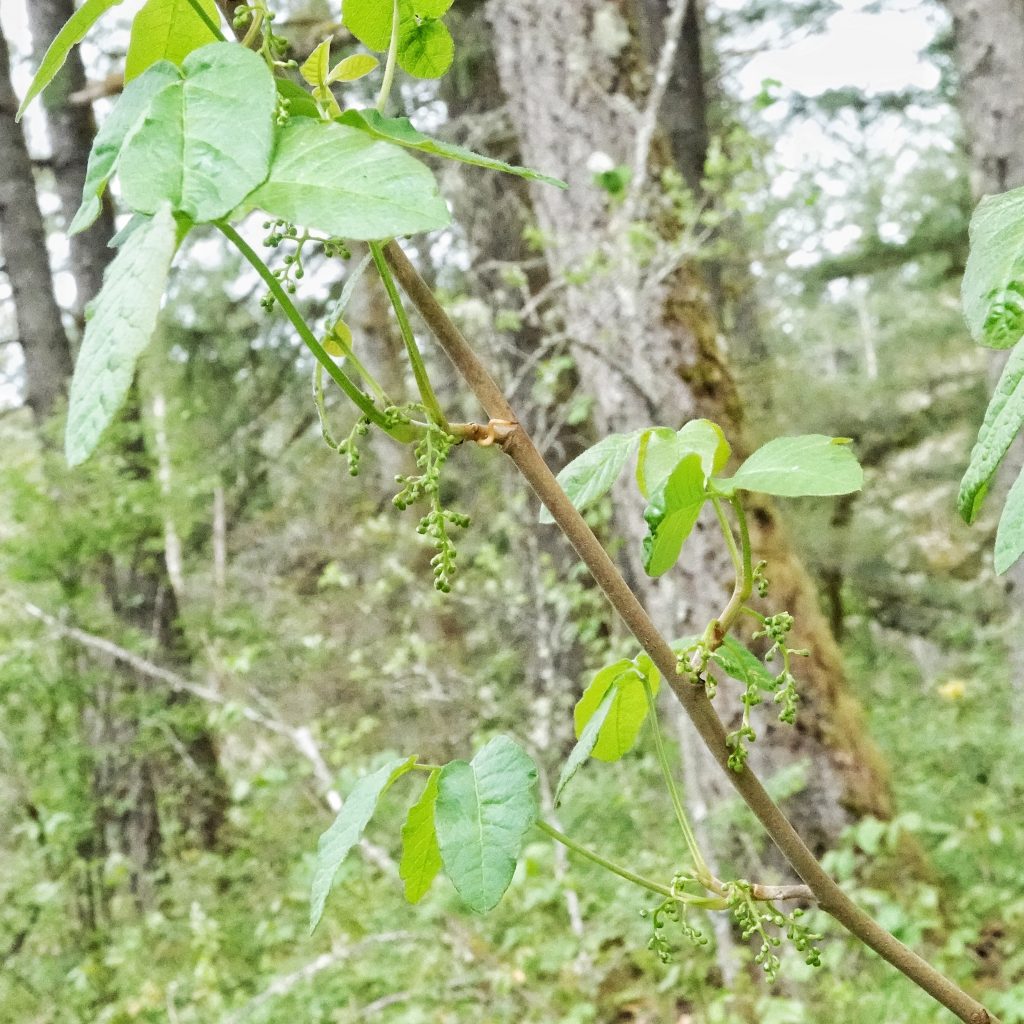
Habitat– “Grows at low to mid elevations in woodlands and on rocky slopes.” Toxicodendron diversilobum | Poison-oak | Wildflowers of the Pacific Northwest
Range– “It is found from Vancouver Island and nearby islands in British Columbia to Baja California, mostly on the west side of the Cascades in Oregon. In Washington, it is most common on Puget Sound islands and nearby shorelines, and along the Columbia River. It is very common on the west side of the Sierra Nevadas and in the Mojave Desert in California.” Pacific Poison Oak, Toxicodendron diversilobum | Native Plants PNW
Reproductive timing– Flowers bloom from April-June, and the berries ripen in August.
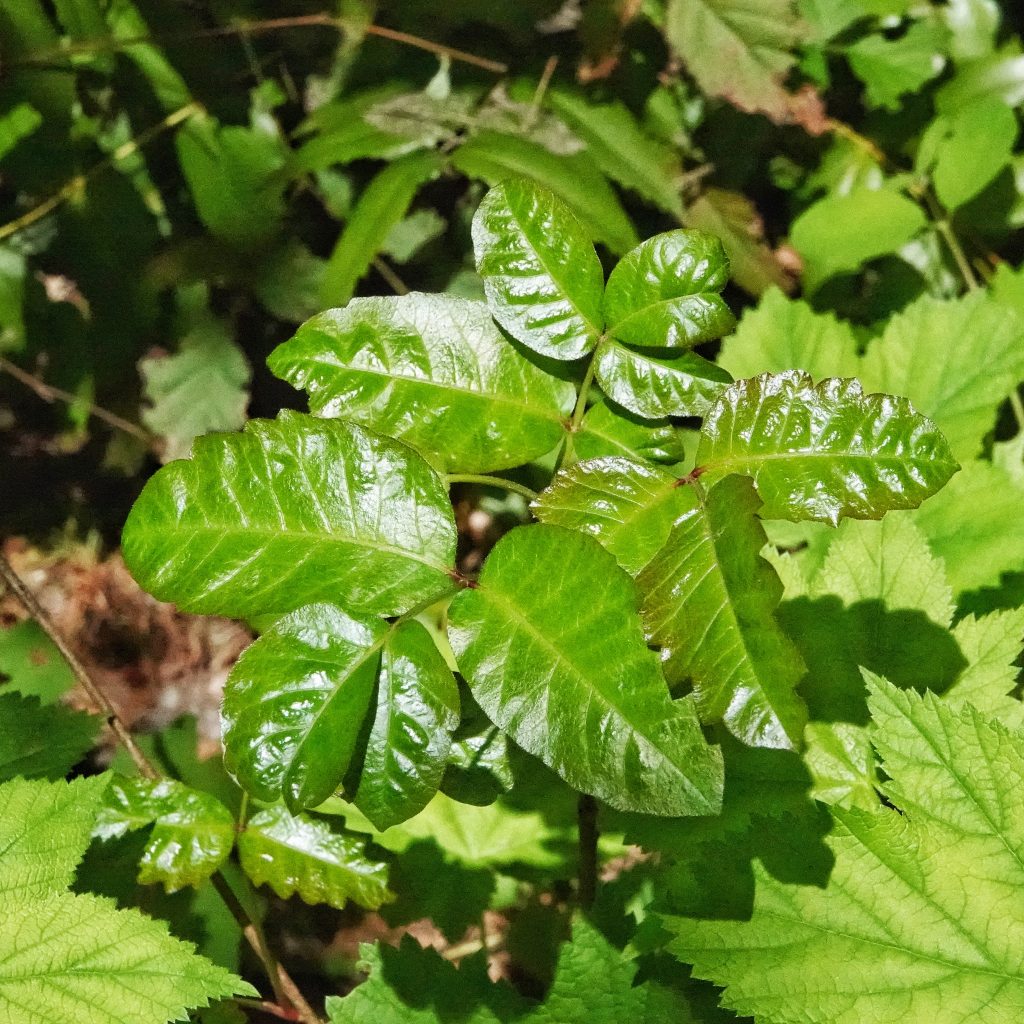
Eaten by– “The berries have high wildlife value for birds and small mammals, especially Flickers, other woodpeckers and squirrels. Deer will browse the foliage. The shrub is used for nesting and cover by some bird species.” Pacific Poison Oak, Toxicodendron diversilobum | Native Plants PNW
“Black-tailed deer, mule deer, California ground squirrels, western gray squirrels, and other indigenous fauna feed on the leaves of the plant. It is rich in phosphorus, calcium, and sulfur. Bird species use the berries for food, and utilize the plant structure for shelter. Neither native animals, nor horses, livestock, or canine pets demonstrate reactions.” Calscape entry for Poisonoak, Toxicodendron diversilobum ; the leaf mining moth Caloptilia diversilobiella and the leaf roller moth Teleiopsis baldiana use it as a larval host; “Nectar: Variable Checkerspot, and the rare Hermes Copper….Cosmopterigidae: Midrib Gall Moth (Sorhagenia nimbosa). Gelechiidae: Teliopsis baldiana. Gracillariidae: Poison Oak Leafminer (Caloptilia diversilobiella). Tortricidae: Verbena Bud Moth (Endothenia hebesana). Sumac Leaftier (Episimus argutana).” https://www.cnps-scv.org/images/handouts/CaliforniaPlantsforLepidoptera2014.pdf
“Poison Oak is a hostplant for California Dodder (Cuscuta californica), a nectar and hostplant for some butterflies …Cuscuta californica. Chaparral Dodder. Convolvulaceae. Nectar: Gray Hairstreak. March – September. Paul Johnson finds Chaparral Dodder a Brown Elfin hostplant in Pinnacles National Monument; Alice Abela photographed a Brown Elfin caterpillar eating it as parasitic on California Buckwheat (Eriogonum fasciculatum).” https://www.cnps-scv.org/images/handouts/CaliforniaPlantsforLepidoptera2014.pdf; the flea beetle Aulacothorax recticollis seems to feed on this plant.
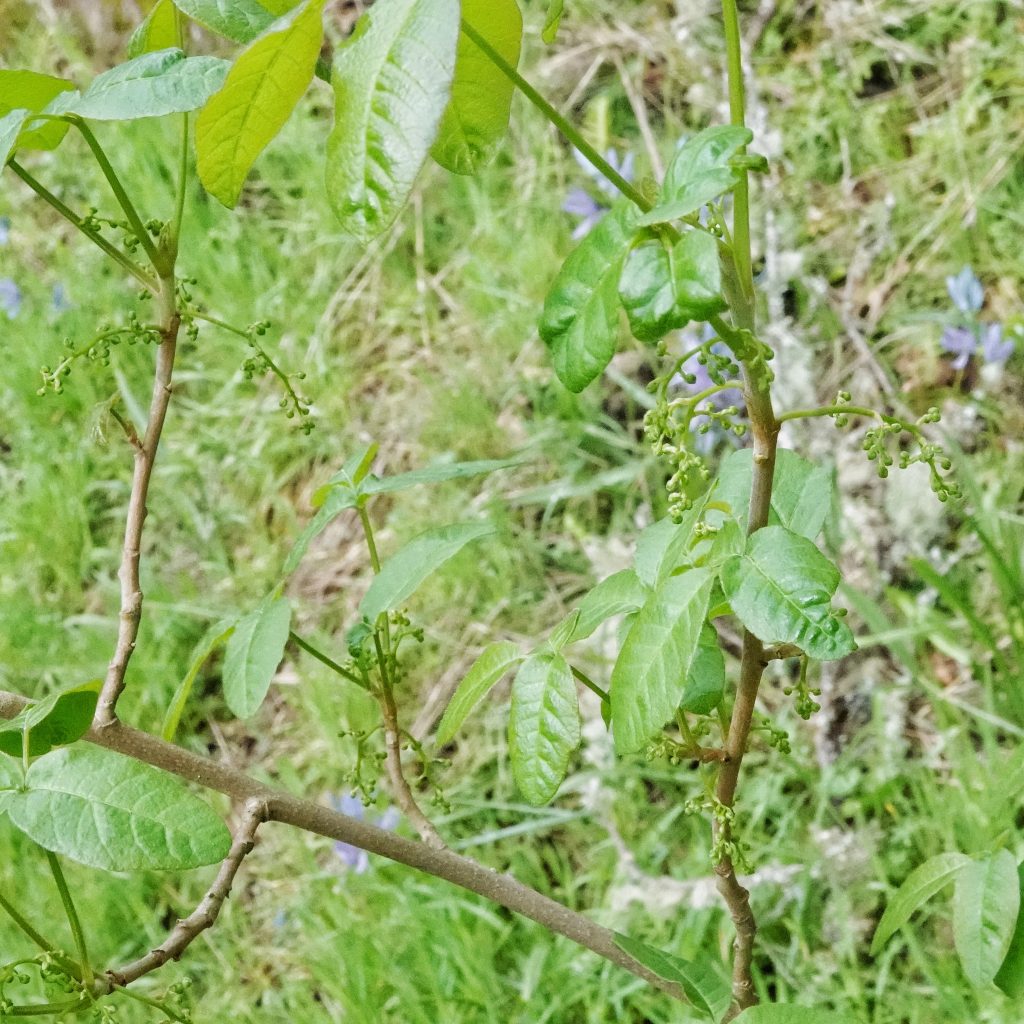
Pacific Poison Oak (U.S. National Park Service)
Pacific Poison Oak, Toxicodendron diversilobum | Native Plants PNW
OregonFlora Toxicodendron diversilobum
BRIT – Native American Ethnobotany Database
https://www.cnps-scv.org/images/handouts/CaliforniaPlantsforLepidoptera2014.pdf
Toxicodendron diversilobum | Poison-oak | Wildflowers of the Pacific Northwest
https://en.wikipedia.org/wiki/Toxicodendron_diversilobum
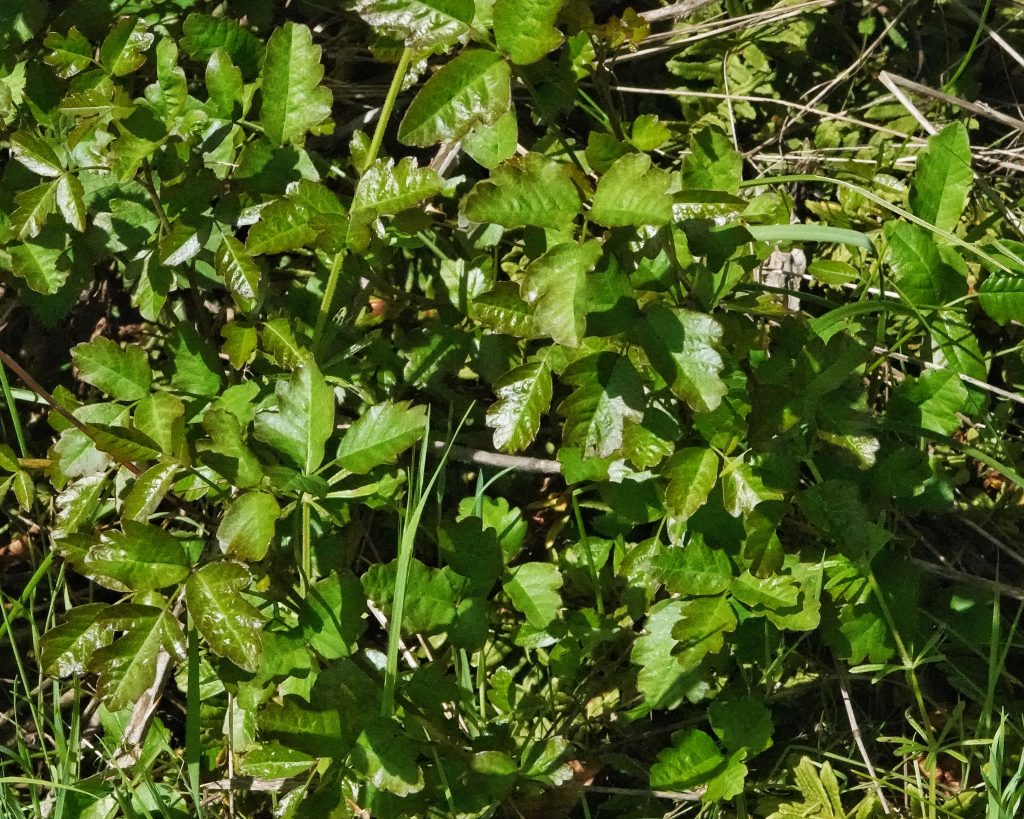
Thanks. A good reminder.
Thank you for this article! I’ve gotten into poison oak on the east coast, but was not aware it was here on the west coast.
It can be abundant in some places! Thanks for your appreciation, Sharon!
I also don’t hate the species as a whole, but I have found myself hating particular sections of particular populations when it presents an impenetrable barrier to where I want to be. I only hate myself when I don’t use my normally acute identification and awareness of this plant and end up with a rash. You’ve hiked with me enough to know that I’m a great spotter and may have saved you a few bucks on calamine lotion.😉🤣
And hours of painful, itching rash! You’re still the only person I know who can identify winter bare twigs. I have not mastered that art.
Thanks for the informative post.
Thanks for your appreciation, Sara!
I have a story about this plant, my hubris, and a tremendous amount of luck that likely saved my life. Turns out this is one of the few things I’m NOT allergic to.
Well, I’d love to hear it!
After several miserable bouts with poison ivy in my former Texas home, I became an ace at its identification. Starting over here in coastal Washington, trying to make sure I can ID poison oak. Sigh….
It can be a challenge!